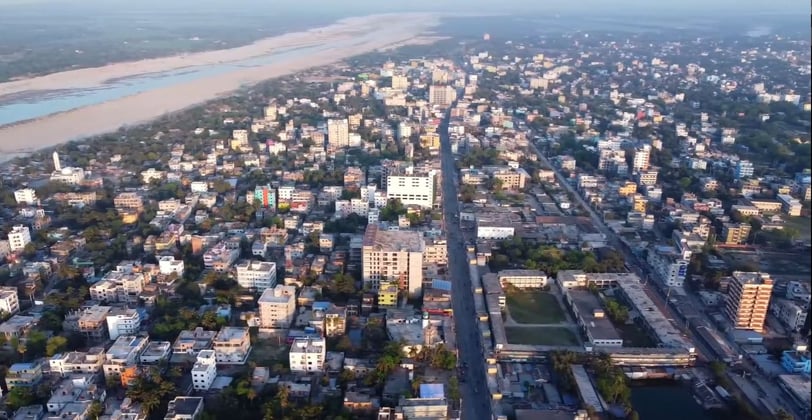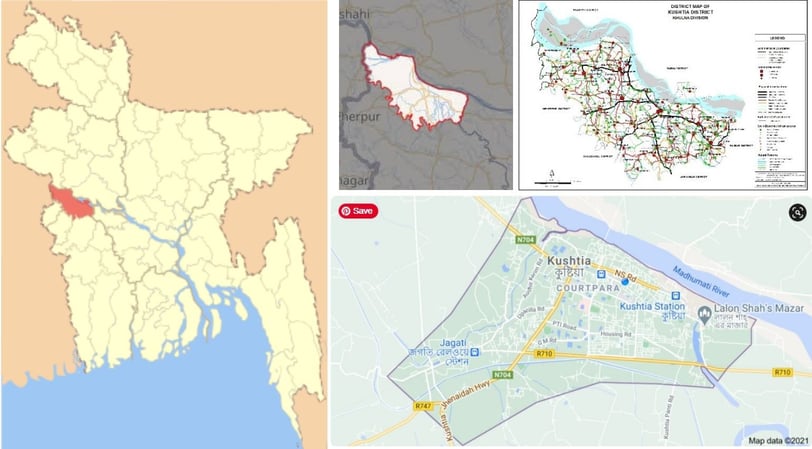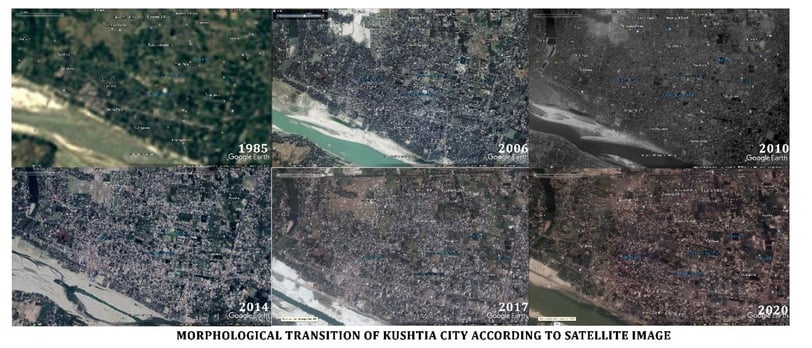Interview: Dear Kushtia
On 1st March 2021, I took a lengthy interview with Mr Mosarraf Hossain, Ex Associate Professor of Kushtia Government College, a philanthropist, education, and history influencer. I described the summary of the interview below.
COMMUNITYCULTURE
Muhammad Golam Sami
6/23/20214 min read


Image: Drone shot of Kushtia City by Muhammad Golam Sami' 2021
On 1st March 2021, I interviewed Mr Mosarraf Hossain, an ex-associate professor of Kushtia Government College, philanthropist, education, and history influencer. I described the summary of the interview below:




There have been significant changes in Kushtia city in the last 50 years. After the liberation war, Kushtia was a small district town ruling two other Sub-districts, Meherpur & Chuadanga. The main town consisted of the Administration buildings on the Southeastern side of the city, and the main town consisted of old Courtpara, Thanapara, Aruapara, and Barobazar on the Northeastern side of the Kushtia town. The whole city was developed beside the river Gorai. Barobazar was the first infrastructurally expanded zone after Kushtia Paurasava was established in 1869. It was developed as a central business district, significant economic hub, and commercial area. Once, the river Gorai had a strong current and was a significant commercial route. However, now it is almost a dead river. After the liberation war, the central district town was from the former Municipality building to Barobazar, connected via the central avenue "NS Road. The prominent marketplace, essential buildings like the Public Library, Central Mosque, District Bangalow, District Parishad, and some govt. Schools were located beside this road. The residential area was located at the Courtpara and Aruapara. Besides this, several educational institutions were here, like Zilla School, Muslim High School, and the Govt. College. The more financially podded habitants lived at Courtpara, and the old Hindu community lived at Aruapara. The banks, retailer markets, godowns, and cottage industries were situated at Barobazar. In the early 1980s, several infrastructures, like the Municipal market beside the court station, relocated.
For example, Kushtia Court was relocated towards the southwest town of Courtpara. This impacted a lot on the town's morph. A new commercial zone began to develop on the northern side of the city. In 1980, the BISIC Act influenced the development of a new industrial area in this part. Despite this, another industrial zone was located in the southern part of controlling tobacco and agro-food. During this period, several mills in the old district, such as Mohini Mills, had transformed into ruins. This industrial zone transition also influenced the city's development pattern in the late 80s. The percentage of pucca roads was so deficient in the 80s, excluding the inter-district highway and NS. Road and some pucca roads inside the inner town had no pitch road and a flawed communication system with other Upazilas. After the 1990s, several pucca roads and the communication system within the other sub-towns were built. 1984 the two other subdivisions separated from Kushtia and achieved district rank. The Housing Estate developed in the late 90s on the southeastern side of Kushtia.
The Estate was a planned residential area that was developed for the govt. Influence. Several blocks named after A,B,C,D,E were declared. Govt. started allotting plots to the residents. The actual development of the Estate was created at the beginning of the 2000s. This housing estate impacted a lot for establishing a planned city. From 2000 to 2010, it faced a mixed transition in morph, while from 2010 to 2020, it faced a rapid morphological evolution. In the 2000s, the only ten-storied building was Lovely Tower, a shopping mall at NS Road. There are about 200+ ten-storied buildings, including residential, commercial, and mixed-use purposes. Most of these buildings were developed between 2013 to 2020. On the other side of the river Gorai, Haripur is located at the river Gorai and Padma estuary. Before 2015, wooden bridges were used to cross the river, and the connection between Haripur and the town was shallow.
Nevertheless, after the Haripur bridge's construction, the communication and transportation system became more straightforward, and Haripur has been developed as a suburban part of Kushtia town. Most of the old administrative and public buildings were demolished by this time. New high-rises replaced those old buildings. Some have made many new additions, some old town halls, theatres, and cinema halls have been demolished, and new malls and commercial places have been developed in that place. The number of old colonial buildings has been drastically decreased day by day. Maybe someday, Kushtia's ancient history will disappear. Our next generation will not know that Kushtia has become the capital of culture, a Major Economic Hub for agro products, and a famous textile mill that contributed to textiles once. Alternatively, the places where once people came for business from the far distance of Old Nadia District.
Meet The Author
Related ARTICLES
Related PROJECTS
Regeneration of urban public realm: At the Commercial Waterfront of Barobazar, Khulna
This project design supports how the commercial waterfront of the Baro Bazar can be developed as an urban space, which will be used for human service and human welfare. At the same time, one of the objectives of this project is to retrofit the entire riverfront with its surroundings. One of the targets of this project is to restore the declining economic progress and the lost importance of the ghats. The entire project has been completed in the renovation and regeneration process.
Image: Waterfront Regeneration at Barobazar Delta Ghat
Location: KUET, Khulna; Year: 2020






